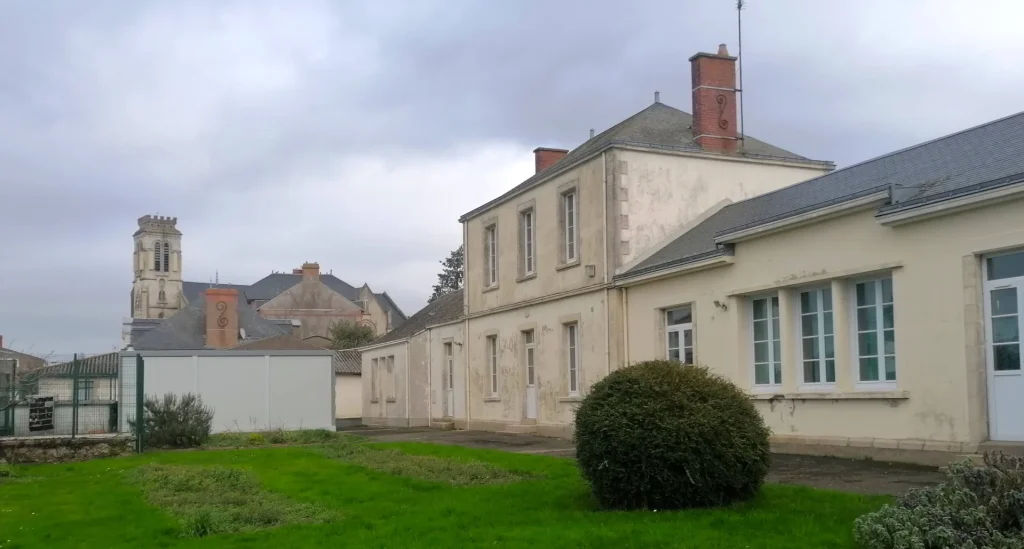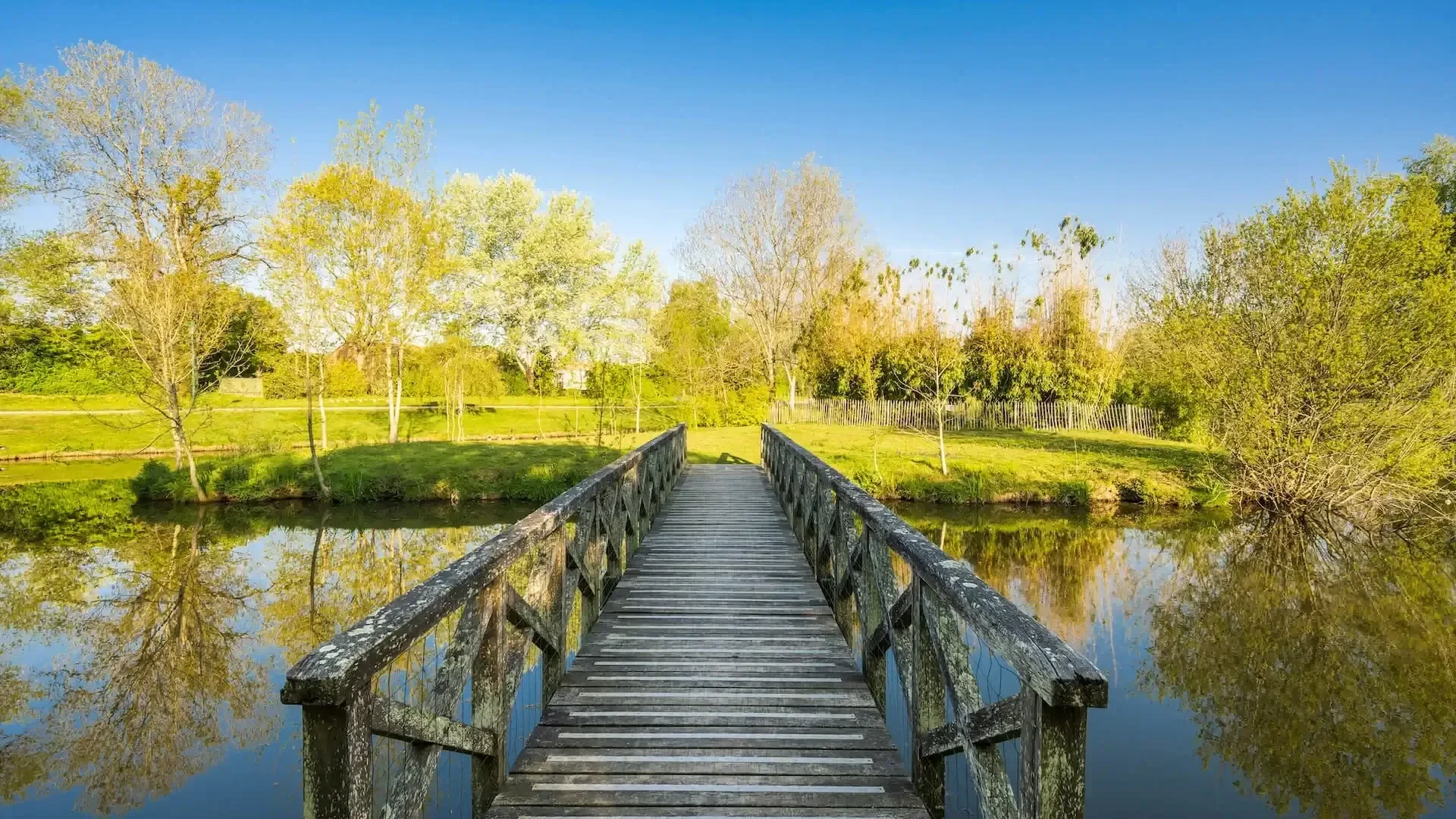Le Calvaire Breton
It was sculpted in 1865 by Yves Hernot, a renowned Breton workshop specialising in the creation of calvaries and funerary monuments. In the centre, the Cross and Christ are chiselled out of a grey granite monolith. At a height of 18 metres, it dominates the picnic area on the edge of the Route de Challans, right next to the Castel du Verger.
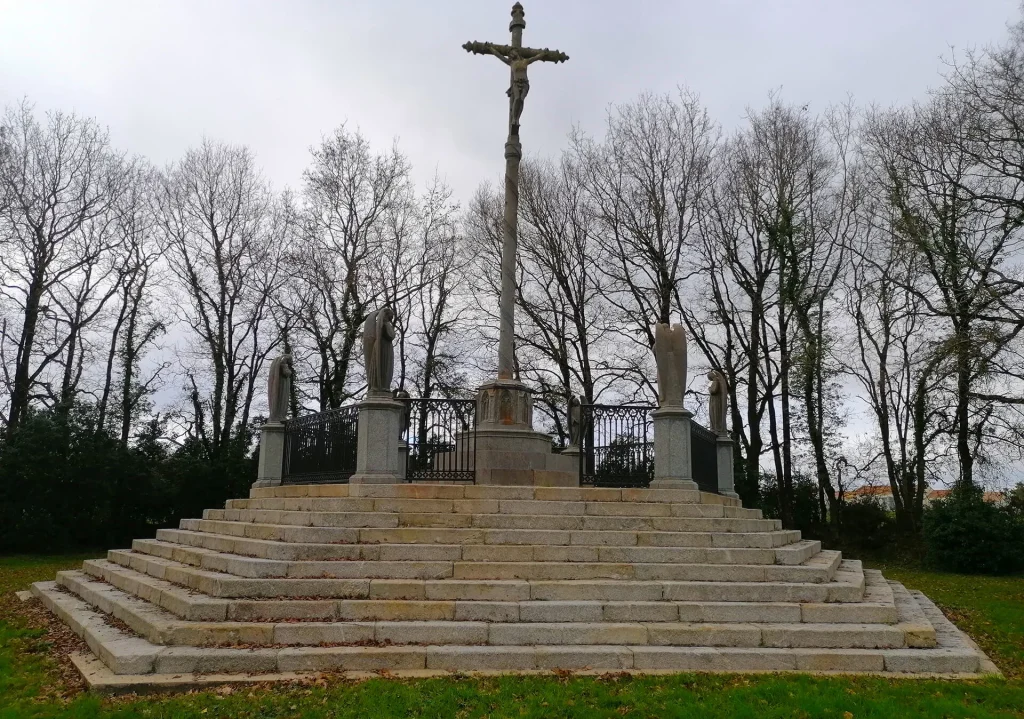
Le Castel du Verger
On the edge of the road to Challans, you can't miss Castel du Verger, whose grounds are tended by its owner, an enthusiast of topiary art. A few vestiges of the 15th-century fortified castle remain, and its architecture is varied and constantly changing. Its chapel, originally Protestant in the 17th century, has retained its sober, classical appearance.
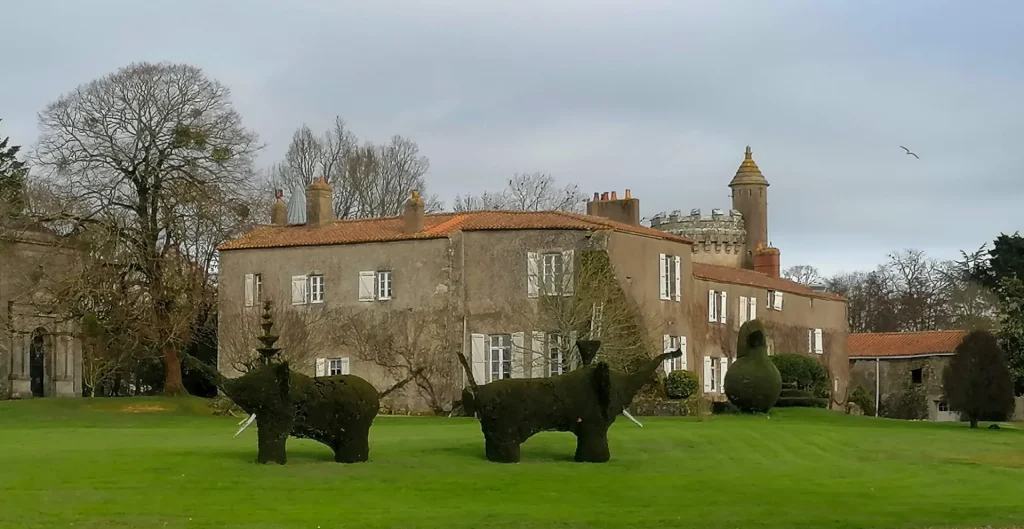
La Croix Barillon
This cross, erected in 1967 and relocated in 1990, honours the memory of Paul Barillon and his companions, whose revolt on behalf of their priest on 2 May 1791 symbolised the first deadly Vendéen struggle for religious freedom. To a gendarme who ordered him to "Give yourself back", the young Barillon shouted "Give me back my God". This emblematic scene adorns several stained glass windows in the Vendée.
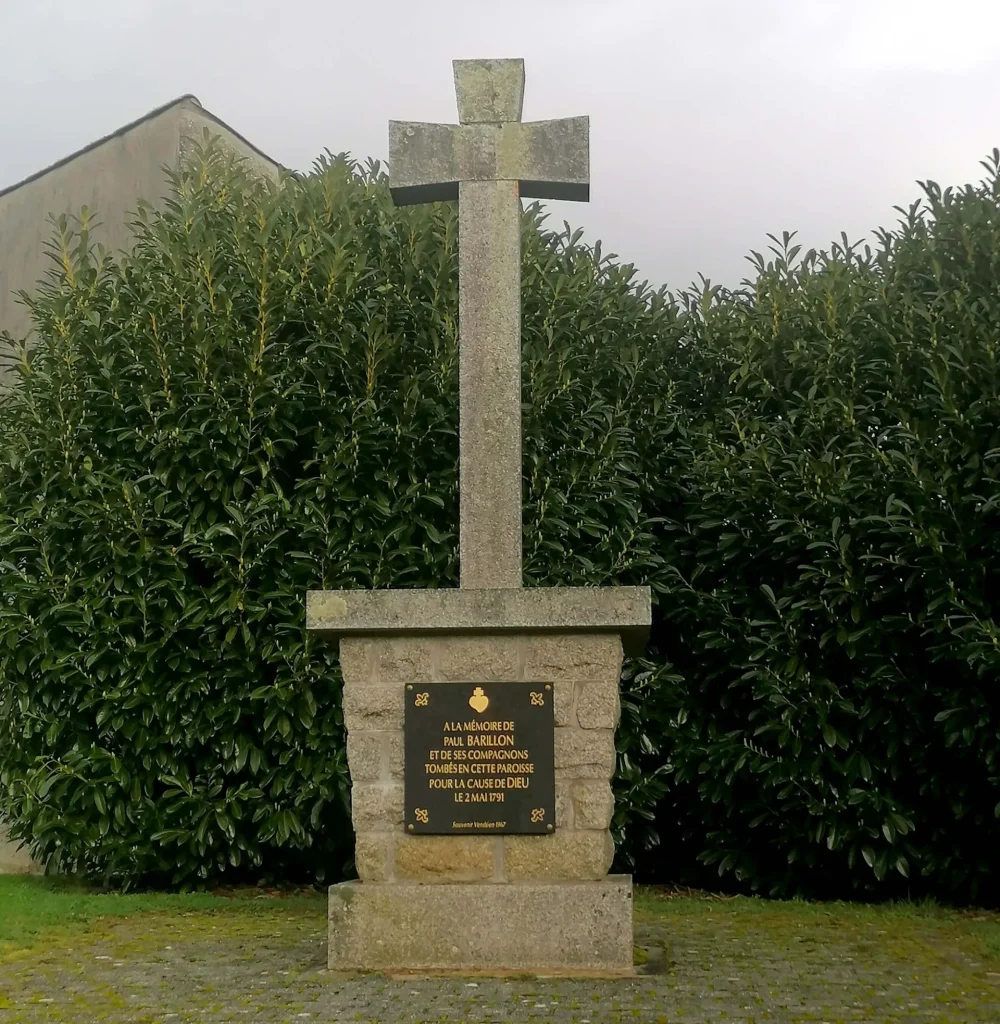
The Old Prison
A former residence dating from the early 19th century, it was mainly used as a home, notably by the local parish priest from 1823 to 1836, and its mayor from 1919 to 1923, but not exclusively. It is also said to have housed a school, a post office and even a prison and police station...
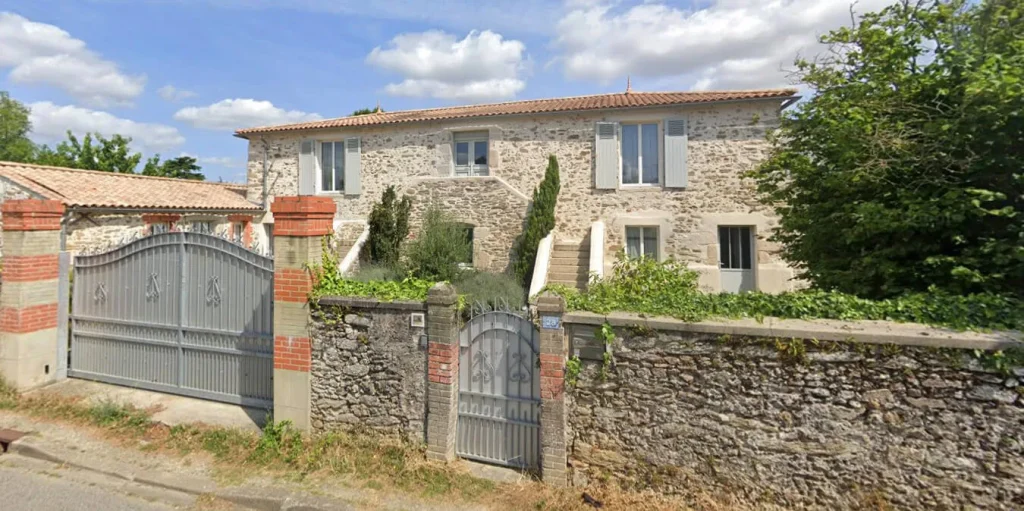
The Ancestral Hedge
The hedge along the allée des Noisetiers is largely made up of very old oak trees. Some of them are thought to be at least 200 years old, as evidenced by the fragonnette growing at their feet. It should be noted that the hedge was reinforced with hazelnut trees when the housing estate was built in the early 2000s.
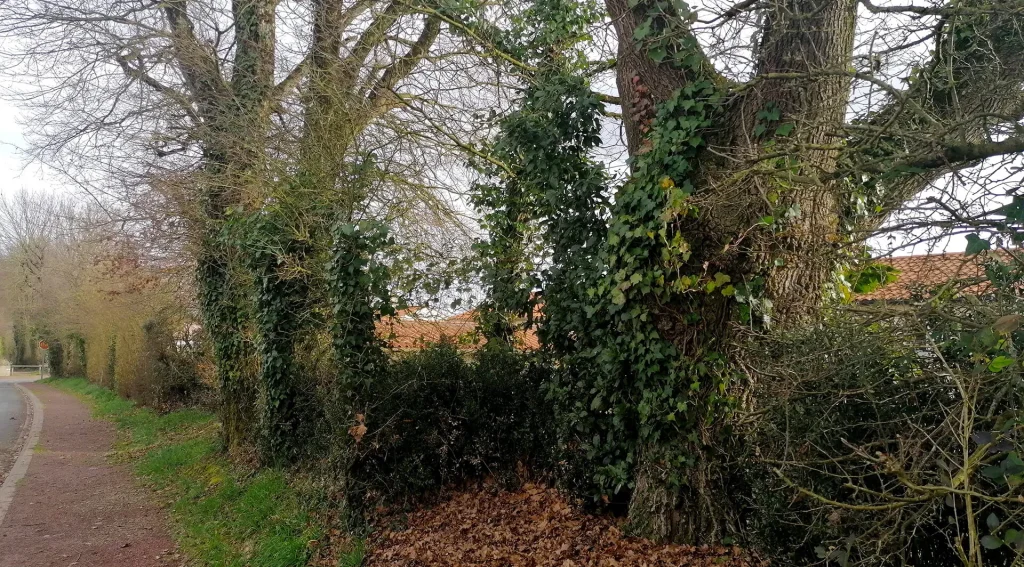
La Mare des Abras
In the heart of the village, the park includes a children's play area, a fitness trail and a number of picnic tables. Every year at the beginning of summer, the Feux de la Saint-Jean (Midsummer bonfire) takes place, a popular festival with a bonfire and fireworks. La Mare is one of the stops on the Annette la Rainette trail: an urban path to discover 9 ponds and aquatic life.
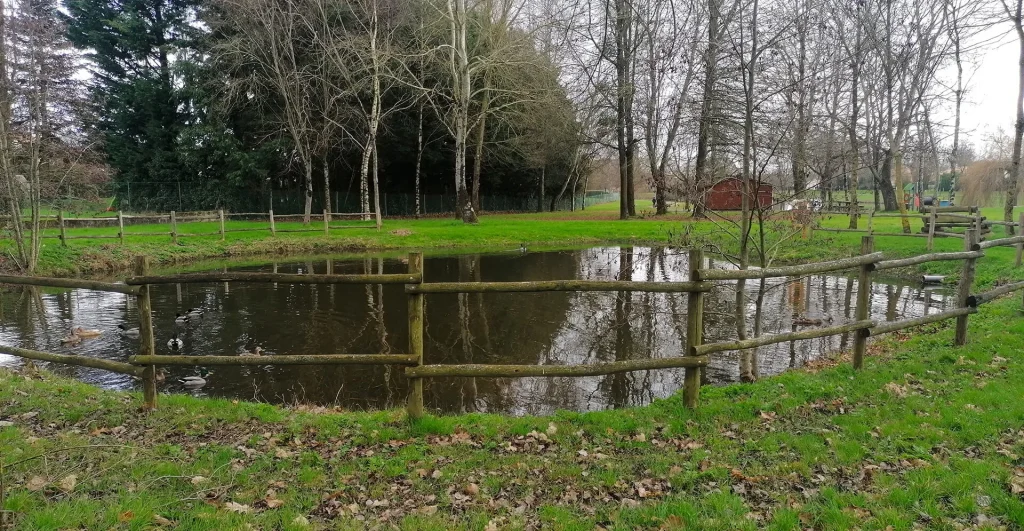
The Pharaonic Tomb
Opposite the entrance to the cemetery, a chapel in the shape of a 7-metre-high pyramid dominates the surrounding crosses. Built in 1852, it houses 3 tombs belonging to the Guinebauld de la Grossetière family, in tribute to their 2 sons who had travelled to Egypt.
The Church
The medieval church was destroyed and replaced by a new one in 1838, which was itself completely destroyed by a cyclone on 16 January 1913. The simple church was rebuilt after the war between 1923 and 1934, and is notable for its crenellated bell tower, which housed 6 bells that survived the cyclone. Only 4 statues, pious relics of the past, remain today; and it is a wooden Christ, dating from the 15th century, found in 1926 in the attic of the presbytery, which is the jewel of this church.
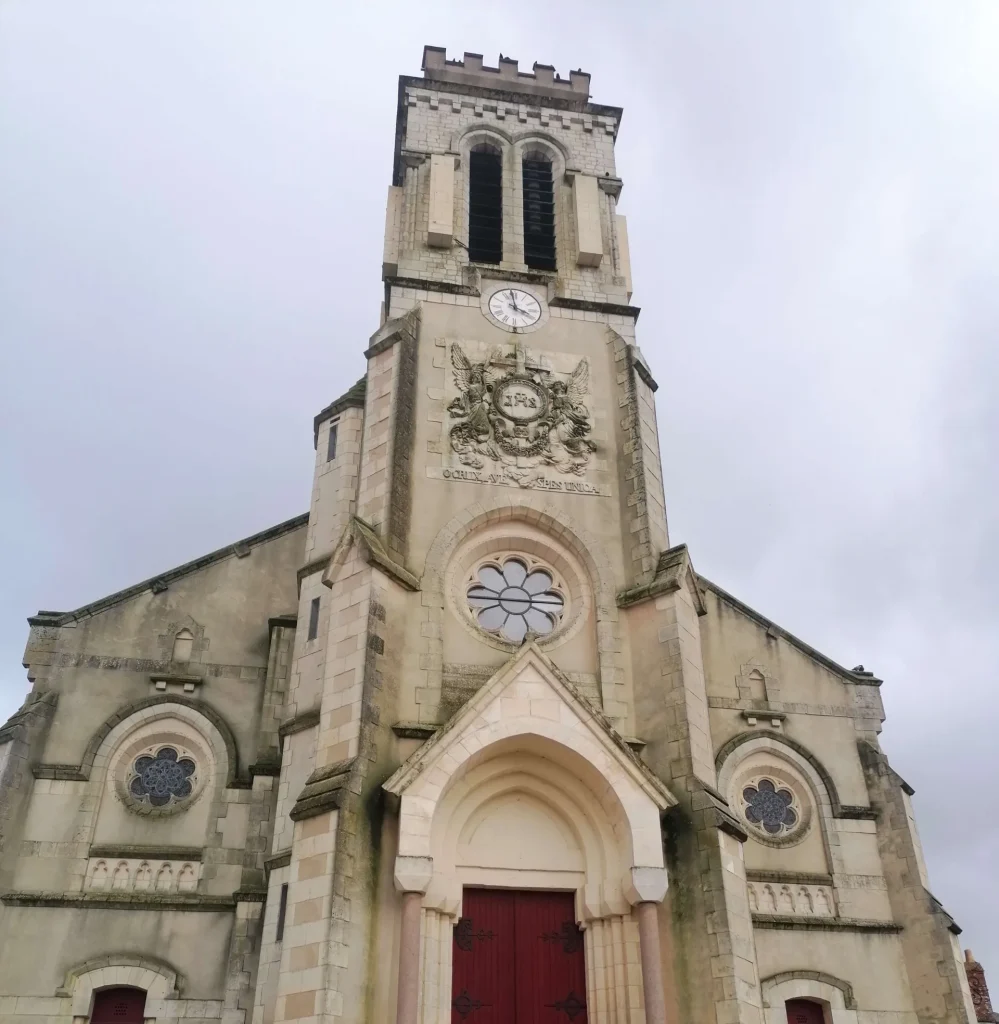
Culture and You
This building housed the former town hall and the first local school from 1876 until 2019. The town hall moved nearby in 1982. Around 1900, there were 5 schools: 3 in the village and 2 in the hamlets. Renamed the Espace Culture & Vous in 2020, it is home to associations and health professionals. An intergenerational garden was created in 2021 to promote conviviality and sharing between Ligneronnais.
